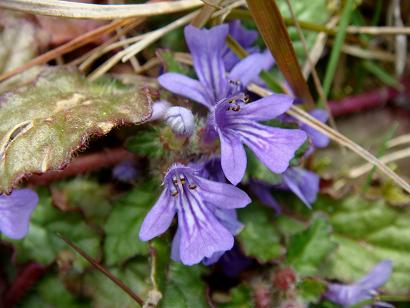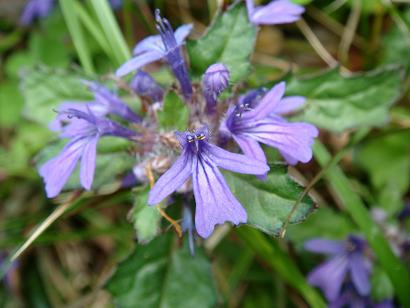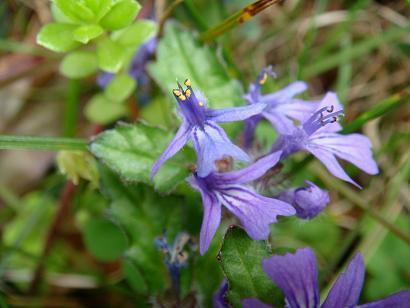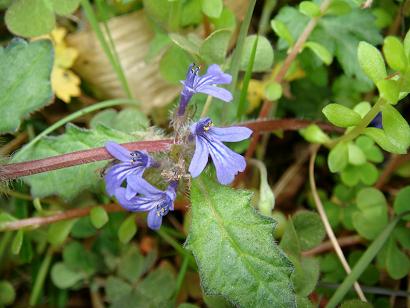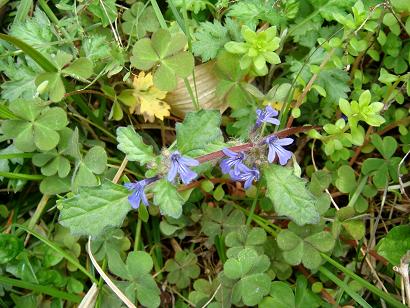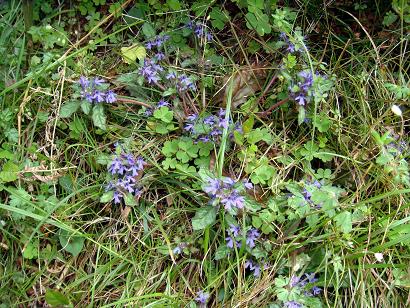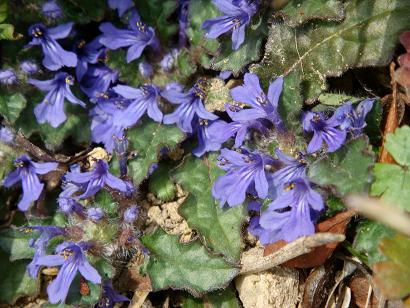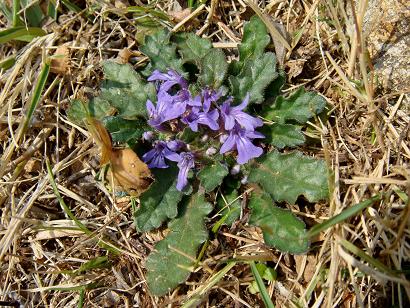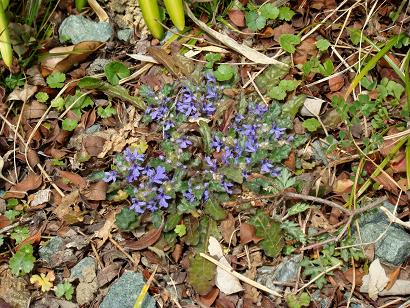| Family |
Lamiaceae (alt. Labiatae) |
| Subfamily |
Ajugoideae |
| Scientific name |
Ajuga decumbens Thunberg |
| Synonyms |
Ajuga decumbens Thunberg var. glabrescens Franchet & Savatier; Ajuga
decumbens Thunberg var. glabrescens Hatusima; Ajuga decumbens Thunberg
var. sinuata Franchet & Savatier; Ajuga devestita Léveillé & Vaniot;
Ajuga fauriei Léveillé & Veniot |
| Common name |
(Japanese common name) kiran-sou (キランソウ, 金瘡小草 or 金襴草 [meaning: kiran weed
(kiran = Japanese pronunciation of Chinese common name)]) |
| (English common name) none |
| Distribution |
(Japan) Honshu, Shikoku, Kyushu |
| (Other nations) Korea, China |
| Habitat |
Forest edge, field, roadside |
| Chromosomal number |
2n=32 |
| Description |
Plants creeping. Leaves 4-6cm long, 1-2cm wide. Flowers purple corollas
1cm, flowering in March to May. Perennial plants. |
| Reference |
Ajuga decumbens Thunb. |
| Ajuga decumbens Thunberg |
| Method for increasing yield of silkworm cocoons employing juvenile and
moulting hormones (US Patent 3941879/1976) |
| Hydrated lipidic lamellar phases or liposomes based on ecdysteroids (US
Patent 5198225/1993) |
| Use of an ecdysteroid for the preparation of cosmetic or dermatological
compositions intended, in particular, for strengthening the water barrier
function of the skin or for the preparation of a skin cell culture medium,
as well as to the compositions (US Patent 5609873/1997) |
| Blood flow amount-improving agent comprising steroid derivative and cosmetic
using same (US Patent 5976515/1999) |
| Composition for enhancing hyaluronic acid productivity and method for preparing
same (US Patent 5882664/1999) |
| Ajuga turkestanica extract and its cosmetic uses (US Patent 7060693/2006) |
| Gene encoding a protein having acyl group transfer activity (US Patent
7105719/2006) |
| Method for detecting proteins under mutual interaction (US Patent 7122382/2006) |
| Compositions and methods for symptomatic relief (United States Patent 20070041993) |
| Skin external preparation (Japanese Patent JP03190809/1991) |
| Cosmetic composition containing moisture-retentive plant extract (Japanese
Patent JP2000053557/2000) |
